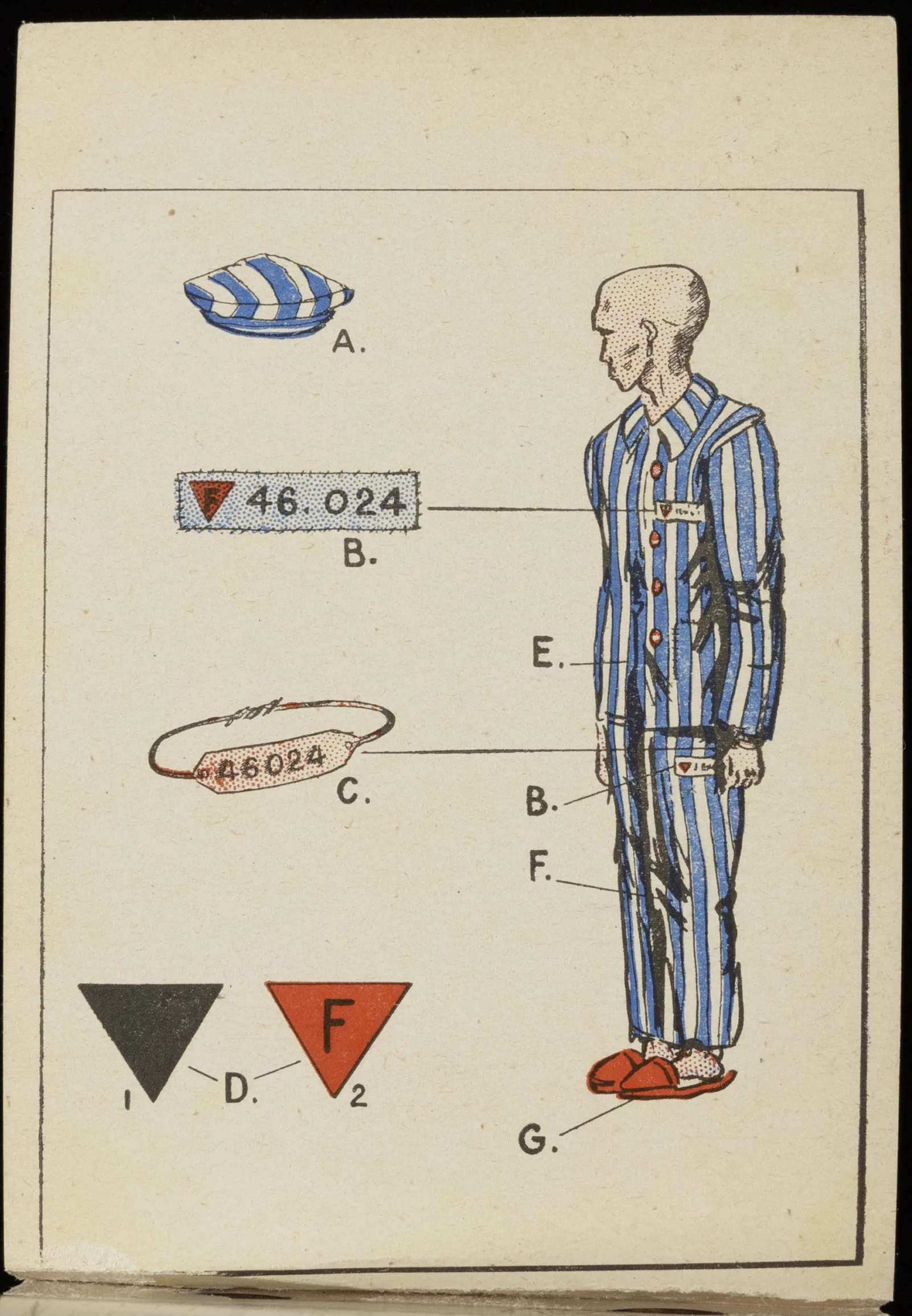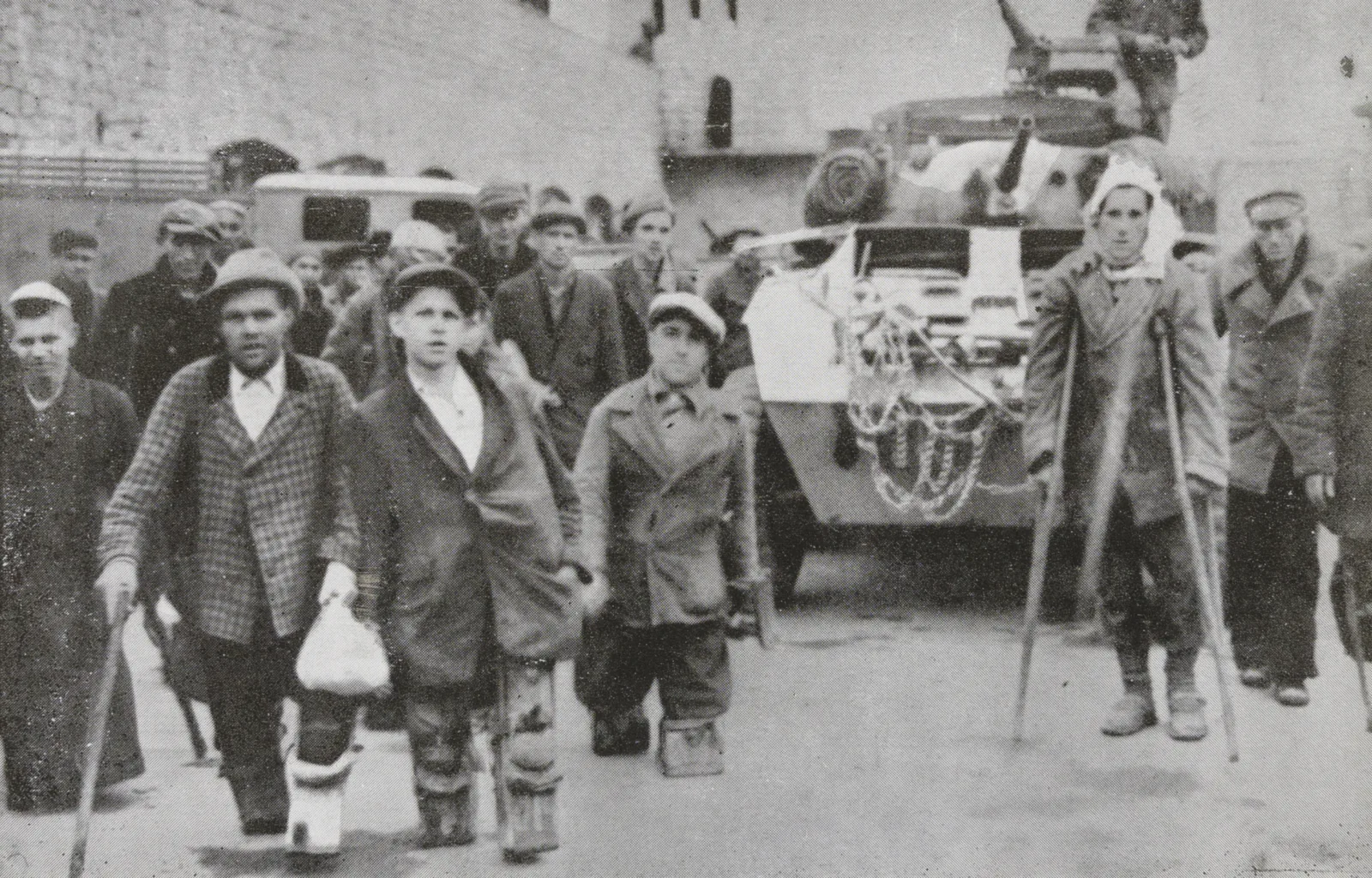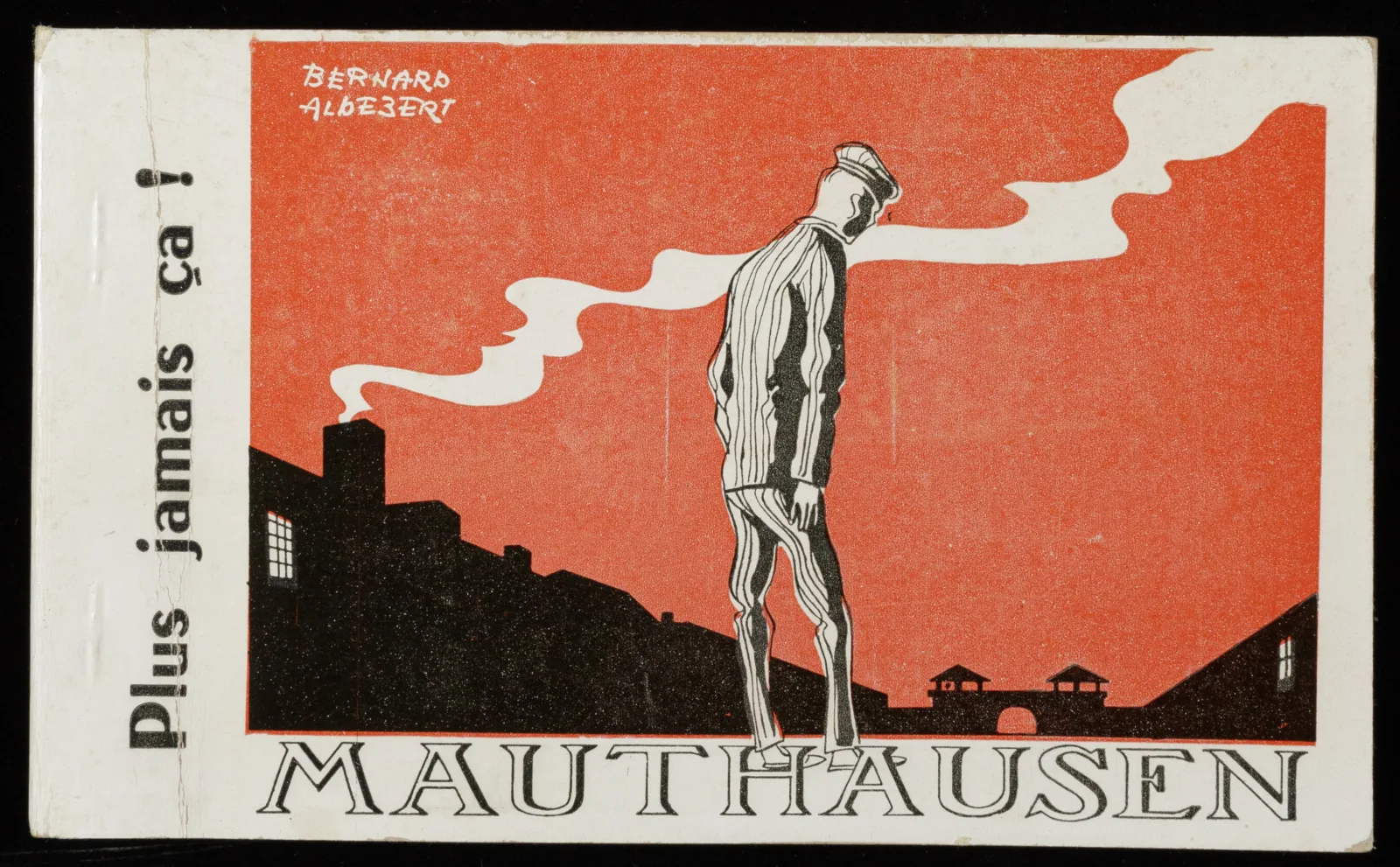On this International Holocaust Remembrance Day, we’re highlighting a rare postcard book from the Newberry collection, produced in 1946 to commemorate survivors of the Mauthausen concentration camp. The book complements the library’s deep collection strength in postcards, but the subject matter varies from our usual holdings.
Mauthausen: Plus Jamais Ça! includes 25 black-and-white photo-illustrated postcards, depicting both the concentration camp architecture of Mauthausen and images of some horrific atrocities that occurred at the camp. “Plus Jamais Ça!” translates as “Never Again!” a phrase so deeply associated with Holocaust memory—and one that, as its inclusion in this title reinforces, was in use before the war ended and gained traction quickly.

The Nazi regime established the Mauthausen concentration camp in Upper Austria in the summer of 1938. Over the seven years of Mauthausen’s operation, nearly 200,000 people passed through the camp. More than 95,000 of them died, from hunger, cold, forced labor, torture, and murder at the hands of the Nazis and their collaborators.
The camp held prisoners of many nationalities: Poles, Czechs, Yugoslavs, Italians, and others. More than 30,000 of those killed at Mauthausen were Soviets. 14,000 were Jews, targeted by the Nazis for total annihilation during the Holocaust.
The postcards in Mauthausen: Plus Jamais Ça! feature images of the camp’s architecture and occupants, including the crematoria and starving and murdered prisoners. Photographs taken in the days just after the US Army arrived at Mauthausen, May 5, 1945, are also reproduced on the postcards. Captions on the backs of the postcards appear in both French and German, leaving ample room for a sender to write a message to an addressee—although it is difficult to imagine sending such disturbing images without warning a recipient.

The book was published by a French association, the Amicale de Mauthausen—though the back cover includes the logo of the Comité International de Mauthausen, of which the Amicale de Mauthausen is a member. The Comité International de Mauthausen, still in existence, describes itself as the “worldwide operating umbrella organization of the associations of survivors of the Mauthausen Concentration Camps.”
In 1945, camp survivors took a “Mauthausen Oath” pledging to remember in “solidarity” the events that took place there and to derive “necessary lessons” from their experiences. This book of postcards was produced to support that mission. Since 1946, the Comité International de Mauthausen’s website explains, annual ceremonies have taken place at the camp to commemorate the anniversary of liberation.
The book’s brief text is direct and raw. It explains—in French and German—that Mauthausen was made for the destruction of people and describes the camp as a “hell” designed to kill by multiple methods: hunger, cold, forced labor, torture, and shooting.
After a list of estimates by nationality of those murdered there, the tone changes, emphasizing that many people at Mauthausen persevered, organized, and fought, even though so many died despite such “heroic resistance.” It closes by explaining that these postcards let the world see what the victims of the Nazi regime at Mauthausen saw there. The raw images of horror—some photos taken by the perpetrators, others by victims or witnesses—are intended to perpetuate the “perennial memory” of the dead and ensure that there will “never again” be another Mauthausen.

Images like these in Mauthausen: Plus Jamais Ça! bear witness to the victims of Nazism and continue to shape collective understanding of the Holocaust, now more than 75 years since the war’s end. These postcards from 1946 show us one way that evidence of the Nazi crimes was collected and disseminated, in an effort to make sure that these crimes would not be denied. The format of the book also facilitated distribution, by dismantling the book, card by card, and sending postcards to friends or acquaintances.
We should not forget that the graphic nature of these images—although well known by now to 21st-century viewers, would have been more shocking to most people in 1946—as we were just beginning to assimilate visual evidence of the Holocaust into our collective understanding.
Spending time with Mauthausen: Plus Jamais Ça! leaves me haunted by the idea of an individual thumbing through the daily mail in 1946 and finding one of these disturbing postcards.
About the Author
Daniel Greene is President and Librarian of the Newberry. He is also the curator of Americans and the Holocaust, an exhibition at the US Holocaust Memorial Museum.
